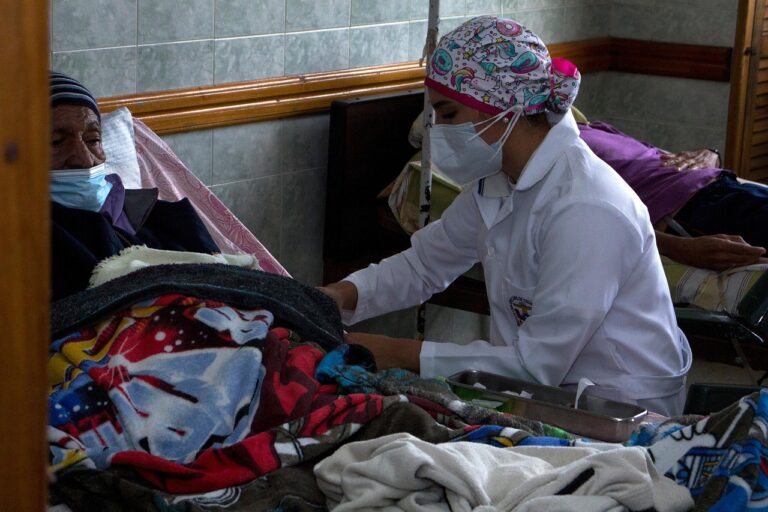Book Appointment Now

The Impact of Nurse-Patient Ratios on Healthcare Outcomes
The impact of nurse-patient ratios on healthcare outcomes is a critical topic in modern nursing. Adequate nurse staffing levels are integral to delivering high-quality care, ensuring patient safety, and promoting the well-being of healthcare workers. Research consistently highlights that lower nurse-patient ratios—where fewer patients are assigned to each nurse—are associated with improved clinical outcomes, reduced errors, and higher patient satisfaction. Conversely, inadequate staffing poses risks, including increased mortality rates, adverse events, and nurse burnout. This article investigates how nurse-patient ratios influence healthcare outcomes across patient safety, satisfaction, and nurse well-being, supported by evidence from recent studies.
Patient Safety: Reducing Errors and Mortality Rates
One of the most significant impacts of nurse-patient ratios is on patient safety. Studies demonstrate that higher staffing levels correlate with reduced errors and lower mortality rates. Nurses are essential in monitoring patients, identifying early warning signs, and preventing complications. When nurse workloads exceed manageable levels, the risk of missed care and medical errors increases dramatically.
A landmark study by Aiken et al. (2002) found that each additional patient assigned to a nurse was associated with a 7% increase in the likelihood of patient mortality within 30 days of admission. Similarly, hospitals with better staffing levels reported fewer incidences of hospital-acquired infections (HAIs), pressure ulcers, and medication errors. The evidence underscores the role of nurse-patient ratios in maintaining vigilance and ensuring timely interventions.
Patient Satisfaction: Enhancing the Care Experience
Patient satisfaction is a key indicator of healthcare quality, and nurse-patient ratios significantly influence this metric. Adequate staffing allows nurses to spend more time with patients, addressing their concerns and providing personalized care. When patients feel attended to and valued, their satisfaction and overall experience improve.
Research by McHugh et al. (2013) revealed that hospitals with better staffing levels achieved higher patient satisfaction scores on the Hospital Consumer Assessment of Healthcare Providers and Systems (HCAHPS) survey. Patients in well-staffed hospitals were more likely to rate their care as excellent, citing better communication and responsiveness as contributing factors.
Conversely, when staffing is insufficient, patients may perceive care as rushed or impersonal, negatively impacting their satisfaction. This not only affects individual experiences but can also harm the hospital’s reputation and financial performance due to lower reimbursement rates tied to satisfaction metrics.
Nurse Well-Being: Addressing Burnout and Retention
The relationship between nurse-patient ratios and nurse well-being is well-documented. Inadequate staffing increases workload stress, leading to burnout, job dissatisfaction, and high turnover rates among nurses. Burnout is characterized by emotional exhaustion, depersonalization, and a reduced sense of accomplishment, which can compromise the quality of care provided.
A study by Kelly, Todd, and Wolfe (2015) highlighted that nurses in understaffed environments were twice as likely to experience burnout compared to their counterparts in well-staffed units. Burnout not only affects individual nurses but also has systemic implications, including higher recruitment costs and disruption of team dynamics.
Improved nurse-patient ratios reduce workload stress, enabling nurses to perform their duties more effectively and maintain their mental and physical health. Satisfied and well-supported nurses are more likely to stay in their roles, contributing to better continuity of care and organizational stability.
Grab a 100% custom nursing paper about nurse-patient ratios impact in nursing
Get Custom Nursing Paper
Effects of Nurse-Patient Ratios on Healthcare Outcomes
| Aspect | Positive Outcomes with Adequate Ratios | Negative Outcomes with Inadequate Ratios |
|---|---|---|
| Patient Safety | Reduced errors, lower mortality rates, fewer adverse events | Increased errors, higher mortality rates |
| Patient Satisfaction | Enhanced communication, personalized care, higher HCAHPS scores | Impersonal care, lower satisfaction rates |
| Nurse Well-Being | Lower burnout, higher job satisfaction, improved retention | Increased burnout, higher turnover rates |
Evidence-Based Strategies to Optimize Nurse-Patient Ratios
1. Legislative Interventions
Mandating minimum nurse-patient ratios through legislation is an effective strategy to ensure consistent staffing levels. For example, California implemented the first state-mandated nurse staffing ratios in 2004, requiring one nurse for every five patients in medical-surgical units. Studies have shown that these regulations led to improved patient outcomes and nurse satisfaction (Aiken et al., 2010).
2. Flexible Staffing Models
Implementing flexible staffing models, such as acuity-based staffing, allows hospitals to allocate nurses based on patient needs rather than fixed numbers. Patients requiring intensive monitoring or specialized care can be assigned fewer patients per nurse, optimizing care delivery.
3. Investment in Workforce Development
Healthcare organizations can invest in recruiting and retaining nursing staff by offering competitive salaries, professional development opportunities, and supportive work environments. These measures reduce turnover and ensure a stable workforce capable of managing patient care effectively.
4. Leveraging Technology
Technology can support staffing optimization through tools that predict patient volumes and acuity, enabling administrators to anticipate staffing needs accurately. Telehealth platforms and remote monitoring systems also help alleviate workload pressures by allowing nurses to monitor patients more efficiently.
Challenges in Achieving Optimal Nurse-Patient Ratios
While the benefits of adequate nurse-patient ratios are clear, achieving them remains challenging. Financial constraints, nursing shortages, and administrative resistance can hinder staffing improvements. The global nursing shortage, exacerbated by factors such as aging populations and increased healthcare demand, underscores the urgency of addressing these challenges.
Innovative solutions, including expanding nursing education programs and creating incentives for entering the profession, are necessary to address the workforce gap. Policymakers and healthcare leaders must prioritize staffing as a critical component of patient safety and quality care.
Conclusion
The impact of nurse-patient ratios on healthcare outcomes cannot be overstated. Adequate staffing levels are essential for enhancing patient safety, improving satisfaction, and supporting nurse well-being. Evidence consistently demonstrates that lower nurse-patient ratios lead to better outcomes for patients and healthcare providers alike. However, achieving optimal ratios requires a multifaceted approach, including legislative support, workforce investment, and technological innovation. By addressing these challenges, healthcare systems can foster environments where both patients and nurses thrive, ultimately delivering higher-quality care and better health outcomes.
References
- Aiken, L. H., Clarke, S. P., Sloane, D. M., et al. (2002). Hospital nurse staffing and patient mortality, nurse burnout, and job dissatisfaction. JAMA, 288(16), 1987-1993. https://doi.org/10.1001/jama.288.16.1987
- Aiken, L. H., Sloane, D. M., Cimiotti, J. P., et al. (2010). Implications of the California nurse staffing mandate for other states. Health Services Research, 45(4), 904-921. https://doi.org/10.1111/j.1475-6773.2010.01114.x
- Kelly, D., Todd, M., & Wolfe, M. (2015). Burnout in nursing: A review of the literature. Journal of Nursing Management, 23(8), 1101-1110. https://doi.org/10.1111/jonm.12318
- McHugh, M. D., Kelly, L. A., Sloane, D. M., & Aiken, L. H. (2013). Associations between nurse staffing and patient outcomes in hospitals with different nurse work environments. Medical Care, 51(4), 365-370. https://doi.org/10.1097/MLR.0b013e3182763313
- Ventola, C. L. (2015). The antibiotic resistance crisis: Part 1: Causes and threats. Pharmacy and Therapeutics, 40(4), 277–283.







